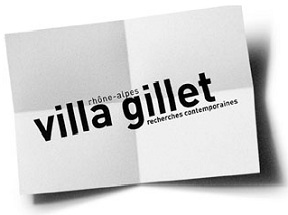Not Looking for Love
Chris Kraus is a Los Angeles based author and filmmaker. She teaches creative writing at UC San Diego and teaches at the European Graduate School. Chris Kraus is well known for her role as an influential film and video maker in the New York Downtown scene of the mid eighties. She was nominated for the 2005 Frank Mather Prize in Art Criticism and is presently the Writer in Residence at Colombia College of Art in Chicago. Writer and filmmaker, Chris Kraus has explored a variety of different subjects ranging from feminism, gender politics, sex workers, philosophy and love.
As women, we are often identified through our choice of sexual partners. When an “attractive” woman has sex with an ugly man, it is a descent into “abjection.” But why? Clearly, it is because as women, we are still believed to attain most of our identities through sexuality. In the present assimilationist climate, any non-monogamous, non-relational sexual act is read as a symptom of emotional damage. Our culture persists in believing that sex holds the magic key to a person’s identity — which is, of course, wrong — and in behaving as if female writers are uniquely charged with upholding the sacred intimacy of the sexual act.
Female writing about sex seems prone to attack when it is seen as deliberately clinical. Two examples that come to mind are Grisiledis Réal’s Black Book and Catherine Millet’s The Sexual Life of Catherine M.
Both books, especially Millet’s, have been held accountable for the ubiquitous banalization of sex within consumer culture. Réal’s Black Book is patently banal: a collection of notebook entries she kept on her regular clients during the thirty years she worked as a prostitute in Geneva. Each entry gives the man’s name, preferences, aesthetic, medical and sociological background, as well as her rate. For example, Dédé: “industrial peasant look, fat, going gray, blue eyes, has warts all over even under his cock — friendly, talkative, cuddly — suck, fuck, 100F.” The entries are clinical chartings, objective and never judgmental. Or André: “intellectual revolutionary, charming and intelligent, middle-aged, assfuck with tact and moderation, suck — fuck tenderly 100F (Can give less when he’s broke) — Particularly congenial man.” André sounds like someone Réal could fall in love with — intelligent, tender, congenial – and yet there is no hierarchy of desire, or any hierarchy at all among Réal’s clients. She is trans-sexual in the spiritual sense of the word. One might say that Réal “objectifies” her clients, but her descriptions are not objectifications at all: they are recognitions of the vast array of potential human experiences that can be obtained via sexual exchange across class, gender, generational, racial, dispositional and other boundaries that separate us in productive life.
For years in LA, my art criticism was laced with depictions of the sexual encounters that at the time were part of my daily life. Why did I do this? What did it achieve as a device? The encounters were portrayed as a kind of social exchange that exemplified the psychic atmosphere in which art was produced. – This slapstick technique — eliding the ‘high’ and the ‘low’ — was often misread as a confession.
Is there a particular level or kind of self-consciousness at work for a woman when she is writing about sex?
Well, no. When I worked in the hustle bars in New York, sometimes I’d fill the back room, ersatz-champagne bottle time, by telling clients Japanese ghost stories. Sometimes I’d give them a hand job. The hand jobs were easier. They demanded less of my soul. Usually, they entailed Kleenex, rapid elbow movement and averted eyes — a literalization of the expression, At arm’s length. I’m thinking of the moment in Mary McCarthy’s first book, The Group, in which Dottie goes to a clinic and gets a diaphragm at her bad-boyfriend’s request. When the bad-boyfriend’s behavior becomes overwhelmingly bad, she leaves the diaphragm, still wrapped in its drug-store bag, on a park bench. This, to me, was an extremely realistic depiction of a woman’s sexual experience that could only be written by a woman, because men, when writing about female sexuality, tend to be more histrionic. They want sex to mean more to us than it does.
Sex, far from holding the key to essential identity, is a tiny vacation from the self. As writer and Semiotexte co-editor Hedi El Kholti writes about one of a series of anonymous hook-ups in Pleasures of the Harbor:
I deliver my usual constructed narrative, getting better at it each time. I’ve become adept at remaining as vague as possible, at practicing complete blandness and unreadability without coming across as aloof. I conveniently condense the years – channeling Blanche Dubois. The surface is evenly lit, but my gaze resists any interpretation. I make myself a blank canvas.
What’s the end game when you write about sex? Critiquing Michel Houllebecq’s The Possibility of An Island in the New Yorker, John Updike asks: “How honest, really, is a world picture that excludes the pleasures of parenting, the comfort of communal belonging, the exercise of daily curiosity and the widely met moral responsibility to make the best of each stage of life, including the last?” Clearly, Houllebecq, a satirist, has failed to meet the aspirational criteria of contemporary literature. Similarly, when women write about sex, the culture imposes a moral imperative to either describe a life-well-lived, or a quest for personal liberation, or a sordid descent redeemable only through twelve-step renunciation. Sex can rarely be funny or boring, as it is in real life. And the female writers who do produce graphic depictions of sexual acts are expected to stick to the point. That is, the work can be literally pornographic in a soft-edged way, or it can be pornographic with some literary pretension, like Toni Bentley’s The Surrender, but it can never be satiric, or irrresolvably emotional, or even critical. –
Female writing is even more prone to attack whenever graphic depictions of sex are delivered by a wide-ranging narrative voice that abruptly switches to other topics. Irony, polemic, rage and analysis are often part of the mix. I’m thinking especially of Tamara Faith Berger’s recent Maidenhead and the work of the late Kathy Acker. The implication is that female sexuality is only acceptable so long as the writer’s persona remains predictably gendered: pliant and vulnerable, and most crucial of all, seeking approval.
Recent female works that include graphic depictions of sexuality have done a great deal to bring down the patriarchal myth of discretion and privacy. But why must their narrators still be likeable? Almost a half-century ago, Shulamith Firestone proposed a female smile-boycott. That challenge remains.
Cette ressource a été publiée dans le cadre de la quatrième saison du festival "Walls and Bridges", organisé par la Villa Gillet, qui s'est tenu à New York du 11 au 20 octobre 2012.
Pour citer cette ressource :
Chris Kraus, Not Looking for Love, La Clé des Langues [en ligne], Lyon, ENS de LYON/DGESCO (ISSN 2107-7029), décembre 2012. Consulté le 12/01/2026. URL: https://cle.ens-lyon.fr/anglais/litterature/entretiens-et-textes-inedits/not-looking-for-love



 Activer le mode zen
Activer le mode zen![[title-image]1332154741757[/title-image] kraus_1355820767022-jpg](https://cle.ens-lyon.fr/anglais/images/kraus_1355820767022-jpg/image_preview)



